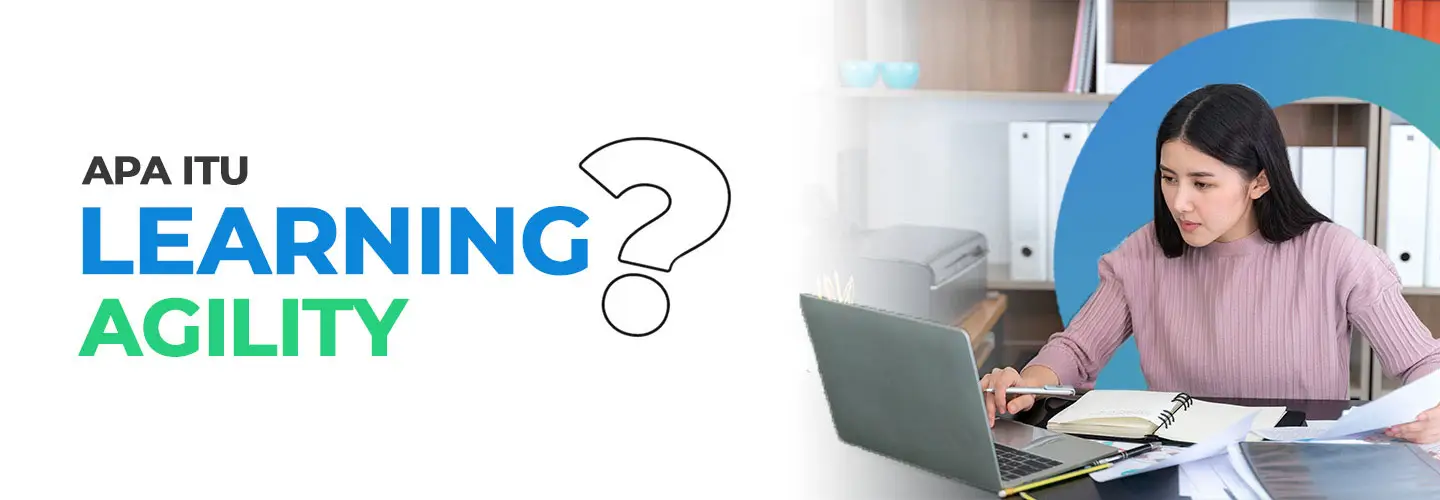Understanding Learning Agility, the Key to Success in a Dynamic World

Learning agility is a concept needed to stay relevant in a dynamic or ever-changing world.
In a world that is constantly evolving and changing rapidly, the ability to adapt and learn from every experience is becoming increasingly important. More than just the ability to absorb new information, learning agility is the art and science of learning quickly and effectively.
For those who want to succeed in the modern era, understanding and developing this ability is not an option, but an urgent need.
This article will explain more deeply about the definition, types, real examples of learning agility in everyday life, and its components.
Definition of Learning Agility
Learning agility is the ability of an individual to quickly adapt and learn from new experiences in an efficient and effective way.
This term was first introduced by Michael Lombardo and Robert Eichinger of Korn Ferry. Learning agility emphasizes the ability to learn from everyday experiences, apply that learning in new situations, and adapt a dynamic approach.
Individuals who have this ability tend not to get stuck in a rigid mindset or way of working. They are able to process new information, relate it to existing knowledge, and find innovative ways to address new challenges.
This ability is important in today's ever-changing world, where technology and business needs are evolving rapidly.
Types of Learning Agility
Learning agility can be divided into several types or dimensions that reflect how a person learns and adapts. Here are the types:
Mental Agility
The ability to think critically and see problems from multiple perspectives. People with high mental agility are able to solve complex problems and are comfortable with ambiguity.
People Agility
The ability to work effectively with a variety of people. Those with high people agility tend to be more able to build relationships and appreciate other people's perspectives, as well as inspire those around them.
Change Agility
The ability to enjoy change and adapt quickly to new situations. People with high change agility tend to be proactive in seeking new opportunities and are able to adapt quickly to change.
Results Agility
The ability to produce extraordinary results under pressure. Those with high results agility tend to focus on the end goal and are able to overcome challenges to achieve it.
Self-Awareness
Self-awareness is one of the important components in learning agility that often forms the foundation for other components.
They are also aware of their personal strengths and weaknesses. Individuals who are self-aware also have a deep understanding of themselves and continue to strive to develop.
Examples of Learning Agility Applications
Learning agility can be seen in various situations, both in professional and personal contexts. Here are some examples:
Business Context
A manager at a technology company who must quickly master new technology in order to lead a new project. This manager learns not only from manuals or formal training, but also from direct experience, asking colleagues, and experimenting with new tools.
Personal Context
An individual who moves to a new country and must adapt to a different culture, language, and social norms. He learns not only from books or courses, but also from everyday interactions, observing others, and adjusting.
Team Context
A project team that must work quickly under tight deadlines. They learn from past mistakes, adjust their approach in real time, and find new ways to complete tasks efficiently.
Components of Learning Agility
Curiosity
People with high learning agility always have great curiosity. They keep asking questions, finding out, and want to understand more deeply about what is happening around them.
Adaptability
They are also not afraid to leave the old way and try something new. They are flexible in their approach and open to change.
Persistence
When facing challenges, individuals with high learning agility also do not give up easily. They keep trying, looking for solutions, and are not afraid to fail.
Self-Reflection
They also often reflect on what has happened, learn lessons, and how it can be done better in the future.
Critical Thinking
The ability to analyze information in depth and make decisions based on available data. This allows them to understand the situation better and take the right steps.
Learning agility is an increasingly important quality in the modern world. In an ever-changing environment, the ability to learn quickly, adapt, and apply new knowledge is key to success.
By understanding this, individuals can begin to develop these abilities and become better prepared for future challenges. Learning agility is also one of the many skills that must be possessed by people involved in the business ecosystem.
Learn through various simulations to encourage good decision-making through the System Thinking and Complex Decision Making program from Prasmul-Eli.
In two days of training, this ISO 9001:2015 certified program has the following four discussions:
- Decision making patterns in simple, complicated, complex & chaotic situations
- Causal Loop Diagram, feedback and delayed feedback in a system
- System thinking in decision and policy making
- Psychological biases in decision-making
Register now via the following link!
